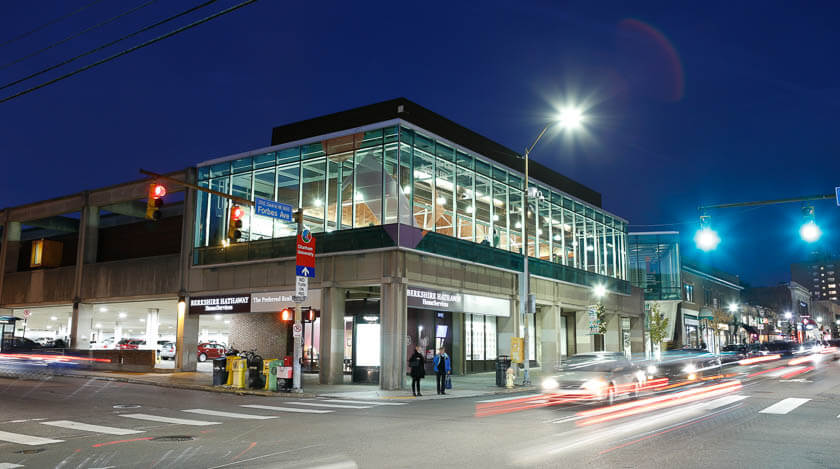Squirrel Hill is one of Pittsburgh’s most vibrant neighborhoods. Having lived there many years and because I still enjoy visiting it, I was intrigued to read Squirrel Hill A Neighborhood History (DBC 14834) by the Squirrel Hill Historical Society and Helen Wilson, Editor. The book begins with the ancient geological formations that created the hill that, until the late 19th century, kept it somewhat isolated and limited its development. It includes chapters on the earliest settlers, Nine Mile Run, the influx of Jewish residents, changes in the business district, the estates and mansions of Squirrel Hill, its two parks, Beechwood Boulevard and the Morrowfield Apartment Building among others.
Here are a few of the facts which the book relates that I found fascinating:
- The mural in the Squirrel Hill Post Office was painted in 1942 as part of Franklin D. Roosevelt’s New Deal program.
- A natural salt lick near the mouth of Nine Mile Run (so named because it was thought to be nine miles from Pittsburgh; it actually is about 7 ½ miles) is believed to have first attracted Native Americans who hunted the game that came there craving salt. The site later produced a saltworks in which steam engines pumped brine that was boiled down to produce salt commercially.
- At the site of the Irish Centre of Pittsburgh, a well produced pressurized effervescent water which was bottled for sale, and which was believed at the time to cure a variety of ailments.
- Although the Pennsylvania Railroad arrived in Pittsburgh in the 1850s, trains were unable to climb the steep slopes of Squirrel Hill, leaving it somewhat isolated. It wasn’t until 1893 and the development of the electric trolley that residential and commercial development began to burgeon there, especially along the Forbes and Murray corridors.
- Squirrel Hill’s Jewish population initially came in two waves, first from Allegheny City (now the North Side) and later from the Hill District.
- The Morrowfield, completed in 1924, was originally a grand residential hotel with a ballroom on the top floor and contained a dining room, beauty shop, barber shop, and delicatessen. It was the site of ladies’ card parties, luncheons, charity balls and wedding receptions. Luminaries such as Fanny Brice and Al Jolson stayed there, as did professional baseball teams.
- Sleigh races, and later, early motor vehicle races, were regularly held on Beechwood Boulevard.
There is so much interesting information in this book.
The Squirrel Hill Historical Society is a nonprofit membership organization dedicated to researching, preserving and celebrating the history of Squirrel Hill. It holds occasional walking tours as well as monthly programs at the Church of the Redeemer, 5700 Forbes Avenue. It has also produced videos of past programs which are posted on YouTube. More information is available at squirrelhillhistory.org.

